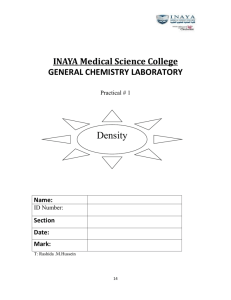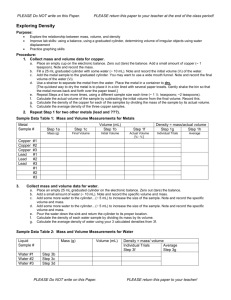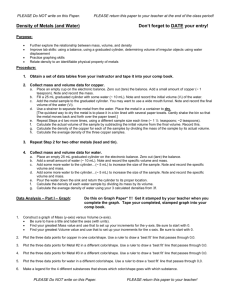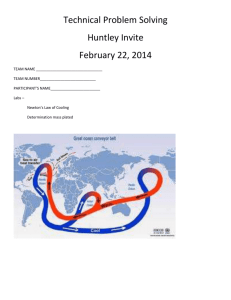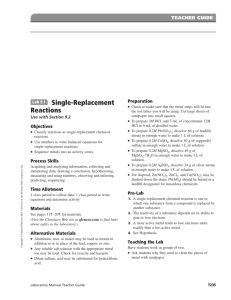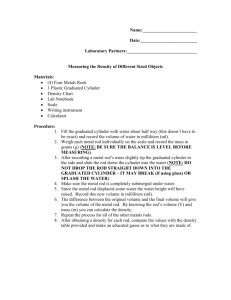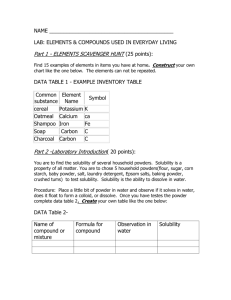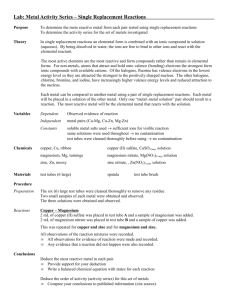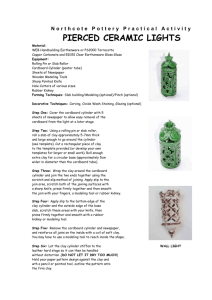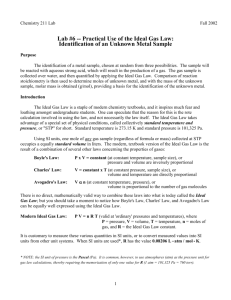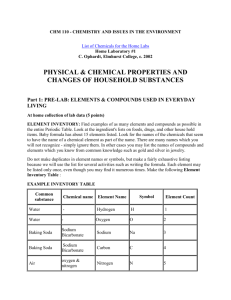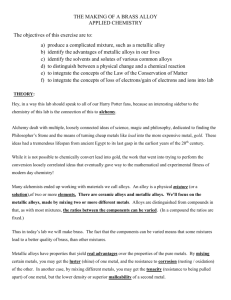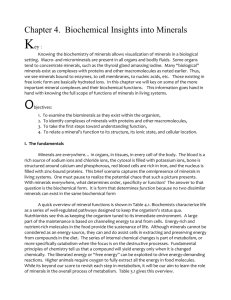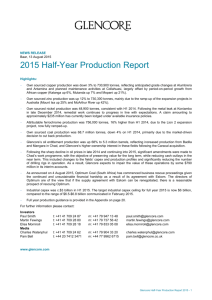L.3 Making Metric Measurements LAB_Student
advertisement
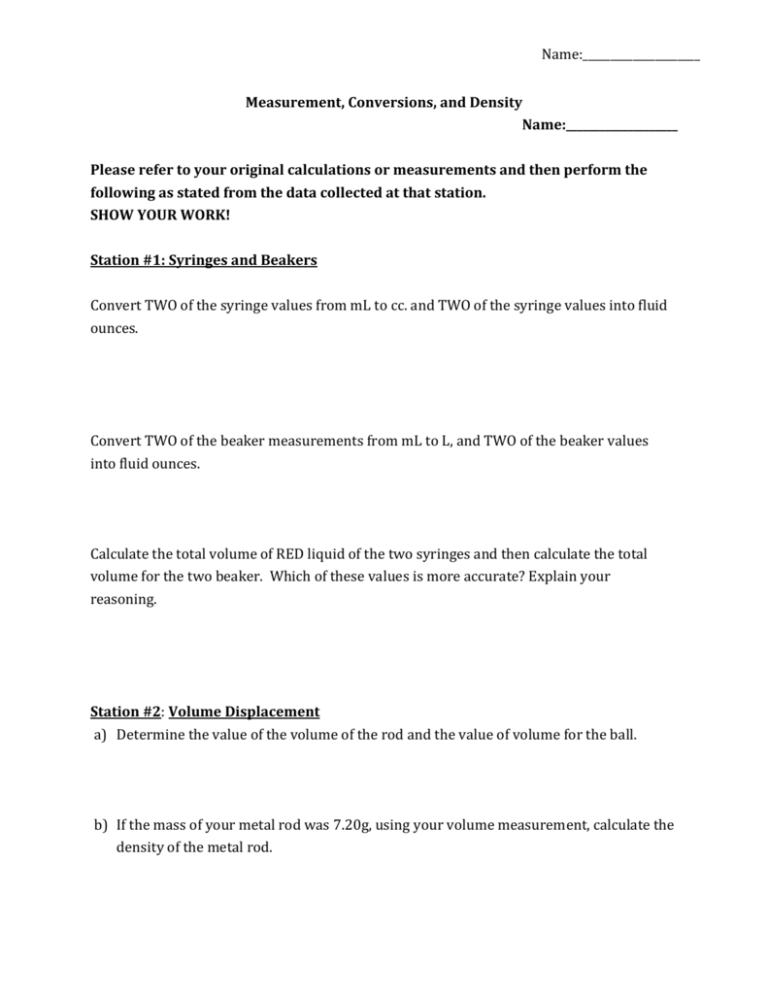
Name:_____________________ Measurement, Conversions, and Density Name:____________________ Please refer to your original calculations or measurements and then perform the following as stated from the data collected at that station. SHOW YOUR WORK! Station #1: Syringes and Beakers Convert TWO of the syringe values from mL to cc. and TWO of the syringe values into fluid ounces. Convert TWO of the beaker measurements from mL to L, and TWO of the beaker values into fluid ounces. Calculate the total volume of RED liquid of the two syringes and then calculate the total volume for the two beaker. Which of these values is more accurate? Explain your reasoning. Station #2: Volume Displacement a) Determine the value of the volume of the rod and the value of volume for the ball. b) If the mass of your metal rod was 7.20g, using your volume measurement, calculate the density of the metal rod. c) If the mass of the metal ball was 4.13g, using your volume measurement, calculate the density of the metal ball. d) Are the metal rod and the metal ball made from the same metal? ________ Explain how you know. HINT: Use DATA/CALCULATIONS to support your claim. e) If zinc has a density of 7.14 g/mL were either or both objects made of zinc? If so, which one(s)? Explain how you came to your conclusion. What evidence do you have supporting your claim? f) If you have a slab of zinc metal with a volume of 3.54 cm3, what would be the mass of the slab? Show your work! g) If a slab of zinc had a mass of .212 kg, what would it’s volume be? Station #3 Determine the volume of the larger box in m3. Show your work. Determine the volume of the smaller box in in3. Station #4: What happened to your ability to measure the volume of the liquid as you used different measuring tools? Did your volumes change between devices? Please explain and refer to DATA. Station #5 Convert the length of the chopstick from cm to meters, and from cm to inches. Calculate the area of the notecard in cm2. Determine the area of the lab table in ft2 Station #6: Calculate the average difference between your original measurement on the 250 ml flask and the 150 mL flask. What do you notice about each of those measurements? Station#7: Calculate the average temperature from the thermometers in C. Convert the average temperature from C into F. (C value*(9/5))+32=Fahrenheit Station 8: Calculate the densities of the cylinders below. SHOW your calculations. Light silver-colored cylinder: gold-colored cylinder: Published densities: lead 11.4 g/ml bronze8.02 g/ml (copper & tin) aluminum 2.70 g/ml copper 8.96 g/ml steel 7.87 g/ml brass 8.60 g/ml (iron & carbon) (copper & zinc) After calculating the density of each of the substances, given the table of published values, what do you think the samples are? Explain your answer. light silver-colored cylinder :________________________________________________________________________ _________________________________________________________________________________________________________ gold-colored cylinder:_______________________________________________________________________________ ________________________________________________________________________________________________________ Calculating Percentage Error Often, laboratory experiments are designed to determine the value of well-known quantities eg the acceleration due to earth's gravity, g. Since these quantities have accepted or true values, we can calculate the percentage error between our measurement of the value and the accepted value with the formula: % error = |Published value – experimental value| published value x 100 eg - you experimentally determined the density of a sample of copper to be 8.01. The experimental error is calculated : % error = ( 8.96 – 8.01) x 100 8.96 = 0.106 x 100 = 10.6 % error Calculate the percentage error for both samples (show working) light silver-colored cylinder: gold-colored cylinder: Accuracy vs. precision Three students have massed 8 pencils. Each student has massed each pencil 1 time and recorded the following data. Your task is to make sense out of the data. Pencil # 1 2 3 4 5 6 7 Student 1 2.5 2.4 2.3 2.6 2.7 2.8 2.4 Student 2 2.5 2.4 2.45 2.3 2.44 2.3 2.45 Student 3 2.56 2.50 2.54 2.54 2.53 2.52 2.55 1. If the actual average mass for a pencil is 2.54 grams, then which student is more accurate and why? HOW do you know? Justify your response with DATA, if possible. 2. Which student is more precise and WHY? How do you know? Justify your response with DATA, if possible.




